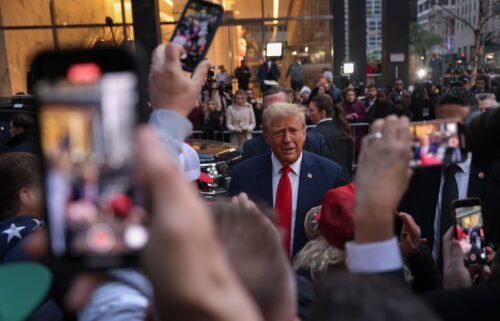What the China trade deal means for American farmers

China promised to buy billions of dollars more in agricultural products from US farmers as part of a “phase one” trade deal signed Wednesday — but the commitments don’t go much further than making up for what was lost during the trade war.
Agriculture exports to China plummeted when the trade war started in 2018, falling by about $21 billion. They edged up a bit last year, but remained far below the 2017 level.
The agreement stipulates that China will make purchases far in excess of what it bought in 2017, totaling $32 billion over the next two years. It provides for $12.5 billion in 2020 and $19.5 billion in 2021.
That’s when the specific promises end, but according to the agreement, the parties “project that the trajectory of increases” will continue through 2025.
The announcement was welcomed by farmers who have been reeling from the trade war, but agriculture trade groups emphasized that there is more work to do.
American Farm Bureau President Zippy Duvall called the agreement an “important step” to getting the Chinese market back for farmers.
“China was once the largest market for US agricultural products but has dropped to fifth largest since retaliatory tariffs were introduced. This agreement will help turn around two years of declining agricultural exports,” he said in a statement.
A spokeswoman for Farmers for Free Trade, Michelle Erickson-Jones, was skeptical that China would follow through on those promises since Beijing has not agreed to lift the tariffs on American-grown produce, which makes it more expensive to Chinese importers than what they can buy from other countries.
“We will see whether Phase One takes steps to dig out from the hole the trade war created or whether like previous ag purchase promises it is all talk,” Erickson-Jones said in a statement.
She was also concerned that the agreement doesn’t open the Chinese market to free trade and instead “makes American farmers increasingly reliant on Chinese state-controlled purchases.”
The US is currently sitting on a record number of soybeans in storage, but that doesn’t necessarily mean China can buy them all up at once. Since the trade war began, the country started purchasing more soybeans from Brazil instead of the United States.
A $28 billion bailout from the Trump administration has served as a lifeline for farmers hurt by the trade war. Those affected by Beijing’s tariffs received direct payments from the government to help make up for some of their losses.
In addition to committing to make specific purchases of American product, China also agreed to establish time frames for its food regulatory process, as well as increase transparency about its process for evaluating products of agricultural biotechnology. American farmers have complained that the Chinese regulatory processes have limited their imports.
It also broadens the list of meat, poultry, rice, seafood, and pet food products allowed to be imported into China.
The agreement signed Wednesday is considered a phase one deal, and negotiators will continue talks to reach a second phase.
Brian Duncan, a farmer in Polo, Illinois, said he’s hoping that second deal will go further to opening up the Chinese market, and that exports grow to levels higher than what they were before 2018.
“I hope it results in genuine increases — that’s its sustainable. And it’s just not a two-year commitment,” Duncan said.




